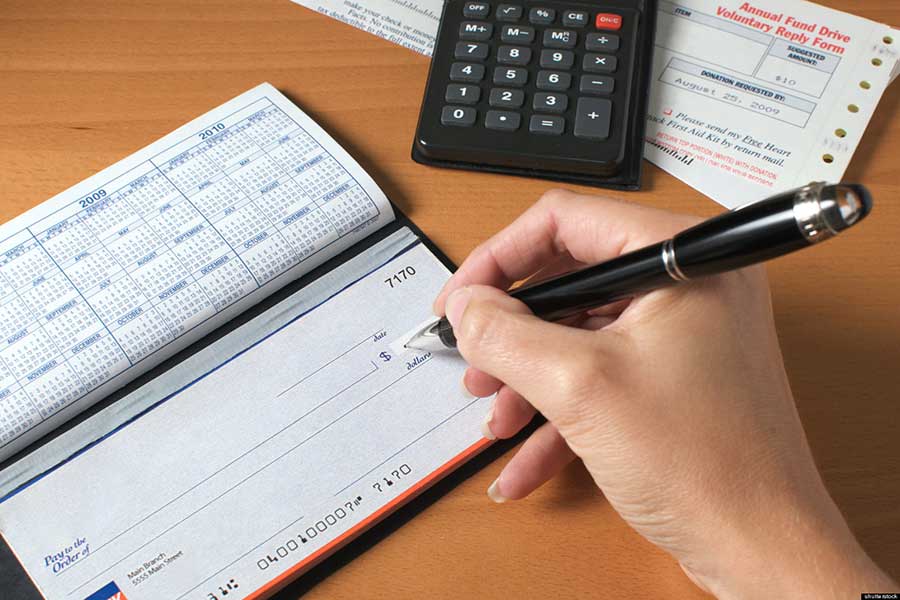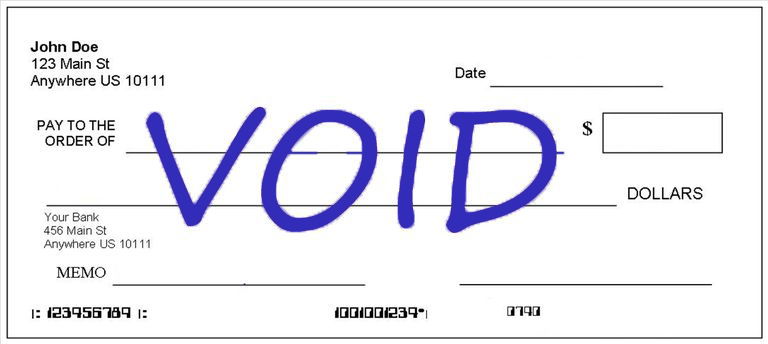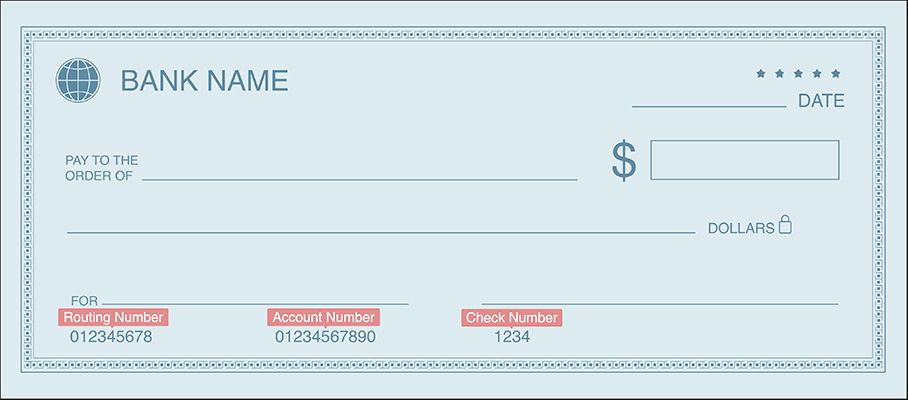While personal checks might seem like an outdated form of payment, they are still sometimes a necessary way to make certain payments. This article will run through all you need to know about personal checks in detail.
We’ll also look at how personal checks function compared to business checks, cashier’s checks, and other types of checks.

What is a personal check?
A personal check is a type of payment technology in the form of a slip of paper. Personal checks are usually tied to a personal checking account, and are issued by financial institutions to their customers.
A check is essentially a signed document that orders a bank or credit union to pay a specified amount of money from the owner’s account to the named recipient.
In terms of the law, a personal check is a binding promise of payment. Failure to keep the promise that a check represents can leave you legally vulnerable.
It’s illegal to write a check that you know cannot be honored, and banks will also charge fees if you bounce a check.
Pros of Personal Checks
As with anything, personal checks are not flawless. Although they have specific benefits and can be necessary at times, there are pros and cons to be aware of when using them.
- Convenient: Personal checks are convenient as they allow you to personally issue payments as and when needed.
- Mail payments: Personal checks make it possible to complete payments by mail.
- Accessible: Checks are an accessible and familiar form of payment all over the world.
- Cheap: Personal checks are relatively cost-effective when compared with other payment methods such as money orders and wire transfers.
Cons of Personal Checks
- Safety: Since checks are just small pieces of paper, they can easily be lost, misplaced or even stolen. They can also be susceptible to fraud and easily damaged.
- Restrictions: Some businesses will not accept personal checks as a form of payment.
- Slow: Checks cannot be cashed while a bank is closed, so weekends and holidays mean receiving the funds from a check will take a day or two.
How to Write a Personal Check
Checks aren’t as common as they used to be. However, the basics of writing a personal check should still be learned. You never know when you may have to make a payment via check, so it’s good to be prepared.
Here are some tips to remember if you ever need to write a personal paper check:
- Start by writing the current date on the date line.
- Add the recipient’s name or business name where appropriate.
- Include the total numeric value of the check in the box with a dollar sign (e.g., 150.99)
- On the “dollar amount” line, spell out the total value with cents expressed as a fraction (e.g., “One hundred fifty dollars and 99/100”).
- Finish by signing your name. Without a signature, your check is invalid.
- Always write in blue or black ink, never colored ink.
- Any details or notes to the recipient can be included in the “Memo” section.
Checks come preprinted with your routing number and account number to ensure that funds are withdrawn from the right account. Therefore, you don’t need to provide them.
Common Mistakes to Avoid
When writing a check, there are a few key things you want to avoid doing.
First, always make sure to fill out the check fully before handing it out. Don’t leave empty spaces on paper checks when it comes to listing the date, values, writing the recipient’s name or your signature.
Make sure your signature is always the very last part you fill out. And certainly try to avoid ever handing out a blank check, i.e., a signed check with no specified value.
Don’t ever ask someone else to write a check on your behalf, unless you trust them to handle your entire personal bank account.
If, for whatever reason, you are having trouble writing a check yourself, don’t worry. You can always order a cashier’s check from your bank or financial institution, or use an alternative form of payment instead.
Alternatives to Personal Checks
If you need to look for an alternative to a personal check, there are plenty of potential options. Here are some of the major alternatives you might want to consider:
Cashier’s Checks
Compared to a personal check, cashier’s checks are considered more secure since they are issued directly from your bank’s funds. Cashier’s checks are therefore guaranteed forms of payment.
These checks are often used to secure real estate and brokerage transactions, but they can be used for many purchases. A cashier’s check can be acquired by visiting your local branch and paying the value of the check in full.
Bank Transfer
ACH transfers are the most common method used to move money between banks, including direct deposit. The vast majority of banks offer ACH transfers, and they are usually complete within three business days.
Wire Transfer
Wire transfers are faster than ACH transfers, although they cost much more in comparison.
Third Party Apps
Third party finance apps such as Zelle, PayPal, and Venmo are a modern alternative to personal checks. These apps make it easy to send money without needing to go through a bank.
Apps like PayPal often charge transfer fees, and can also take a cut whenever currency exchange is involved, so be aware of those fees. These apps can be a great way to send money to friends and family online.
Bill Pay
Bill Pay is a convenient way to pay bills that could be available through your mobile banking app.
Bill Pay is becoming a popular way for consumers to pay bills, and manage them from the convenience of home. You can also use it to set up automatic payments, and check your payment history.
Frequently Asked Questions
When should you use a personal check?
Although personal checks might be on the decline in terms of use, they are still used by some to make purchases and pay for certain services. They are also an established way to transfer money between accounts offline.
Some businesses and services will require you to use a check, such as landlords and small businesses that may not have the capacity to process debit or credit card transactions.
In most cases, however, it simply comes down to personal preference. Personal checks are a well established, old-school payment method that many will feel more comfortable with compared to online payments.
Can I write a personal check from my savings account?
No, federal regulations prohibit customers from writing a personal check against a savings account. Additionally, savings accounts can only be accessed through ATM or debit card. They cannot be used to make purchases.
How do I order a checkbook?
If you have a bank account, you should be able to order a personal checkbook directly from your bank or credit union. Simply contact your financial institution and ask them about ordering a personal checkbook for your bank account.
Where can I cash a personal check?
You can cash a personal check at a bank, credit union, check cashing store, or retail store such as grocery or department store that offers check cashing services. Some businesses may also cash personal checks for regular customers. It’s best to call ahead or check online to confirm the location’s check cashing policies and fees.
How safe are personal checks?
Personal checks are fairly safe, comparatively. They can be relatively easy to lose, which is a downside. But because they represent the promise of payment, rather than a guaranteed payment, losing them isn’t quite as bad as losing cash.
That said, using a personal check may leave you more susceptible to fraud in comparison to credit or debit cards, for example. Because they are paper-based, there are very few security features that can be applied to checks in the event of fraud.
What’s the difference between personal checks, business checks, certified checks, and cashier’s checks?
As discussed, a personal check is a paper slip from your issuing bank or credit union that is tied to your personal bank account. Once written and signed by you, it becomes a legally binding promise of payment.
Business checks, on the other hand, are simply paper checks that are tied to a business checking account. A business check draws directly from a business’s bank account, allowing account holders to distinguish personal and professional payments.
Cashier’s checks are paper checks which draw directly on the bank’s own funds to guarantee payment. These are often requested for large purchases. Cashier’s checks are signed by a teller, hence the name.
A certified check is similar to a cashier’s check. However, the difference is that a certified check is verified and signed by both the bank and the account holder. A cashier’s check simply requires the signature of a representative of the bank.
A certified check draws directly on the account holder’s personal checking account, ensuring and confirming that the necessary funds are there.
Can I write a personal check from my business checking account?
It’s always best to avoid mixing any personal checks with your business accounts. This could potentially raise a red flag on your bank account, plus it defeats the purpose of having separate finances with a personal account and a business account.




